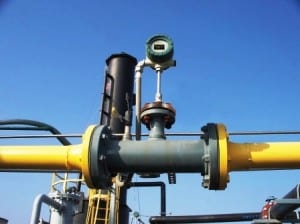Air separation plants separate atmospheric air into its primary constituents, which are approximately 78% nitrogen, 21% oxygen, 0.9% Argon and a handful of rare inert gases (xenon, neon, hydrogen, helium, krypton and carbon dioxide). These facilities produce air separation gases or industrial gases, including oxygen and nitrogen.
Industrial Uses of Oxygen

Oxygen is a reactive gas and commonly used to create oxygen enriched air. This fortified air when used in industrial processes can speed up reaction rates, and at times increase productivity of the equipment.
Industrial oxygen is used to increase the amount of oxygen for biological and combustion processes. It is used in medical applications, industrial and municipal wastewater treatment systems.
By using oxygen enriched air in a combustion process, an opportunity to save energy is created. When reducing nitrogen (an inert gas) in a furnace or chemical process, there is a reduction in the energy required to compress the nitrogen. This not only saves energy, it also reduces the hot gases vented from the combustion process, which saves stack gas system cleanup costs.
Additionally, oxygen reactivity is used in copper, lead, steel and zinc processing. It is also used in glass furnaces, cement kilns, chemical manufacturing, pulp and paper manufacture and welding.
Industrial Use of Nitrogen
Other than nitrogen reacting with oxygen at high temperatures, as in the combustion process, it is inert under normal temperature and pressure. Since Nitrogen has little reactivity and is much less expensive than the other inert gases, nitrogen is commonly used to protect potentially reactive materials from oxygen. Some common applications nitrogen is used for are: as the atmosphere for growing crystals, a carrier for gas chromatography, in chemical processing and food processing; such as the aeration of mayonnaise.
Nitrogen tank blanketing is involved in a variety of manufacturing industries worldwide, especially in the petrochemical and pharmaceutical industries. In the tank blanketing process, nitrogen serves as a low pressure “blanket” of inert gas and is injected into a vapor space of a storage tank, above the liquid. The primary reason this is done is to avoid emission of toxic fumes, and to prevent fire or explosion. Given the safety implications of this requirement, measuring the nitrogen flow is very important.
Thermal Mass Meters
Whether nitrogen or oxygen, flow meters are needed to verify consumption, identify excessive usage or sub metering the gas. Sage Thermal Mass Flow Meters are an excellent choice for measuring the gases, especially given their wide turndown and reproducibility.

